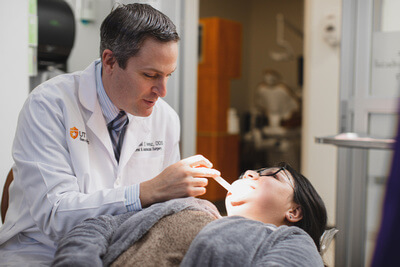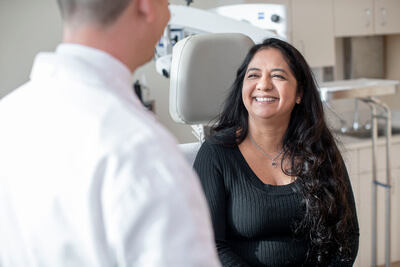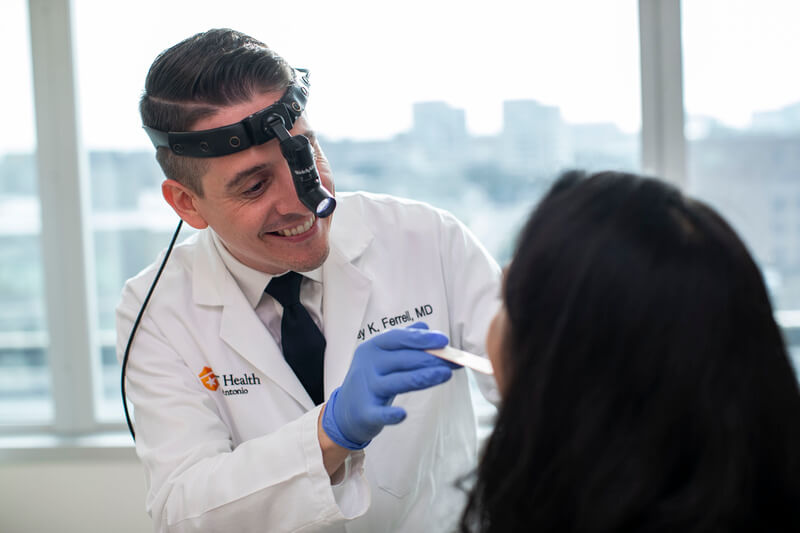Human papillomavirus (HPV) spreads quietly through intimate skin-to-skin contact, often developing into an infection that goes undetected by being virtually symptom-free. In the U.S., nearly 47,000 cases of cancer are found in parts of the body where HPV infection is also found.
“Over 80% of sexually active people will be infected with human papillomavirus at some point in their lives and be able to fight it off with no symptoms,” said Daniel Perez, DDS, MS, FACS, director of the Oral and Maxillofacial Surgery Clinic at UT Dentistry.
For years, health providers have issued warnings about cervical cancer as the most common cancer connected with the virus, however, a recent study published in the Delaware Journal of Public Health, stated that oropharyngeal cancer rates have now surpassed cervical cancer as the most common cancer associated with HPV in the country.
Striking a new generation
“What makes people so susceptible to oropharyngeal cancer, which develops at the base of the tongue, in the tonsils and throat, is the concentration of lymphatic tissue there,” Perez said.
Perez explained that lymphatic tissue helps to fight infection, however it contains deep pockets where HPV can hide and spread into the neck without causing pain or being seen, which is very different from oral cancer.

“Oral cancer refers to red or white lesions in the front of the mouth, such as the lips, cheeks, gums and front of the tongue, it is often found in older males and primarily caused by tobacco and alcohol use. In contrast, HPV-positive oropharyngeal cancer is in the back of the throat and it’s increasingly found in younger age groups and in those who do not heavily use tobacco or alcohol,” he said.
According the study, this is due to oral sexual behaviors becoming more common over the past 50 years, particularly in younger generations. The paper states that the risk of individuals with more than ten lifetime oral sex partners developing HPV-related oropharyngeal cancer increases four-fold.
Prevention and early detection
Early detection is key to managing any medical condition. However, the silent progression of oropharyngeal cancer poses a challenge for patients and health providers. Unlike cervical cancer, which can be detected early through a pap smear test, there is currently no equivalent testing available for other HPV-related cancers, making prevention a priority.
“The best preventative measure for HPV-related cancers is going to be an early HPV vaccination before being exposed to the HPV virus,” said Jay Ferrell, MD, FACS, co-director of the Division of Head and Neck Surgery within the Mays Cancer Center, home to UT Health San Antonio MD Anderson Cancer Center.
“HPV-positive oropharyngeal cancer patients don’t have a severe sore throat; they don’t have early voice changes or early swallowing changes. Many times, the only presenting symptom is going to be that lump in the neck,” he said.
Ferrell noted that the lack of symptoms often delays a diagnosis until the cancer advances far enough to begin causing discomfort. In most cases, Ferrell said it takes a trained otorhinolaryngologist, commonly called an ear, nose and throat doctor, to identify its development, so awareness of its prevalence among younger adults is important.
Ferrell and Perez both stress the importance of open communication between parents and pediatricians regarding the HPV vaccination and its role in preventing infection prior to an opportunity for exposure.
Collaborating against the threat
 Ferrell and Perez represent two specialties that are part of a larger multidisciplinary cancer care approach at The University of Texas Health Science Center at San Antonio. The collaboration is a patient’s line of defense in the face of a cancer diagnosis. Medical, dental, nursing and allied health professionals are able to easily connect patients directly with specialists at the Mays Cancer Center at the first sign of any concern.
Ferrell and Perez represent two specialties that are part of a larger multidisciplinary cancer care approach at The University of Texas Health Science Center at San Antonio. The collaboration is a patient’s line of defense in the face of a cancer diagnosis. Medical, dental, nursing and allied health professionals are able to easily connect patients directly with specialists at the Mays Cancer Center at the first sign of any concern.
Patients are then able to receive diagnostic services and cancer treatment at the only National Cancer Institute-designated Cancer Center in Central and South Texas.
“It’s going to sound cliché, but cancer treatment is a team sport,” said Ferrell. “For head and neck cancers, a team approach is very much a prerequisite of care. These are challenging cancers to treat — no two tumors are created equal.”
Ferrell chairs the cancer center’s Head and Neck Multidisciplinary Tumor Board, which is a body of specialists who meet weekly to review patient cases and decide their treatment plans. The membership of the board includes representatives from specialty surgical teams like Ferrell’s, radiation oncology, medical oncology, radiology, dietary and nutrition, speech-language pathology and plastic and reconstructive surgery to name a few.
The board stays invested in each patient by remaining in communication and reviewing a patient’s progress throughout their treatment and recovery.
And recover they do.
“Thankfully, with treatment, these patients have high cure rates. We observe overall cure rates of 80-90% in HPV-associated oropharyngeal cancer patients with radiation and chemotherapy,” Ferrell said.
For patients who do require surgery, Ferrell, also the director of the Head and Neck Robotic Surgery Program, said advancements in technology, such as trans-oral robotic surgery, are allowing his team to address more difficult cases that traditional surgery couldn’t. Surgeons are now able to better target and remove cancerous tissues, limiting the disruption to the healthy, surrounding tissue, decreasing complications.
Despite high recovery rates, Ferrell and Perez said it’s important for people to know what’s normal or abnormal for their body.
“The take-home message is that head and neck cancers can hit people from many walks of life and in the prime of life,” said Ferrell. “It’s no longer a cancer exclusive to elderly men with extensive smoking histories. We need people to recognize that even though they are healthy, this is a cancer that is on the rise in Texas and the United States, and they should seek medical treatment if they notice any changes in their mouth, throat or neck.”
To schedule an appointment with a Mays Cancer Center oncologist, call 210-450-1000 or visit MaysCancerCenter.org/Appointments.


